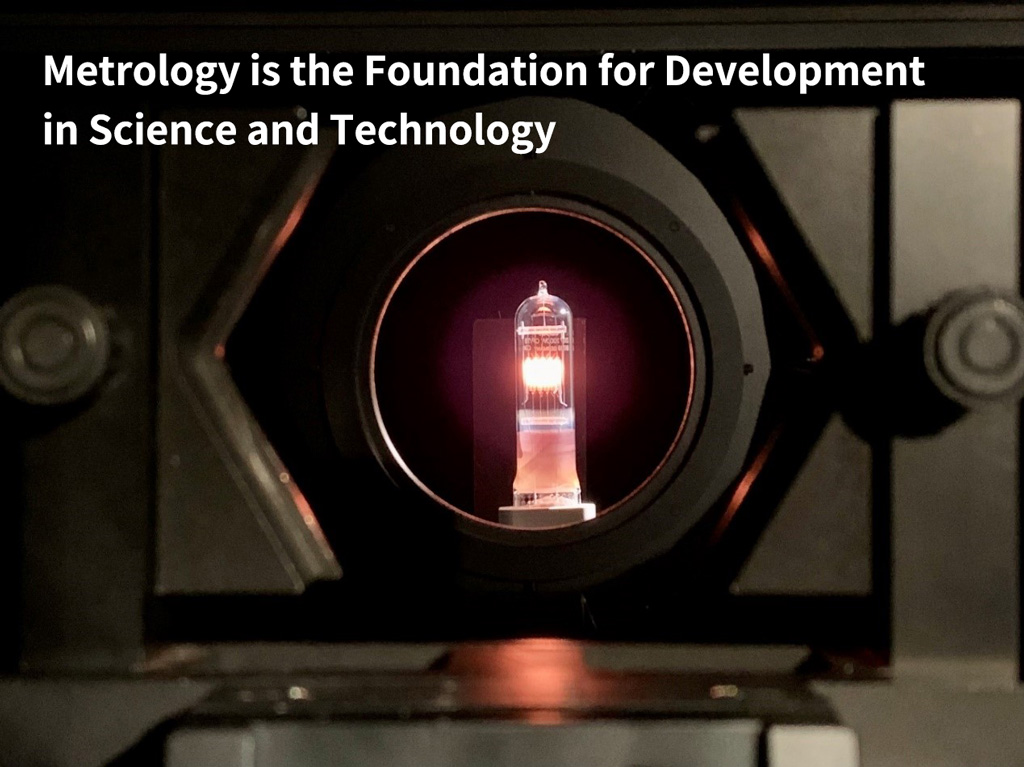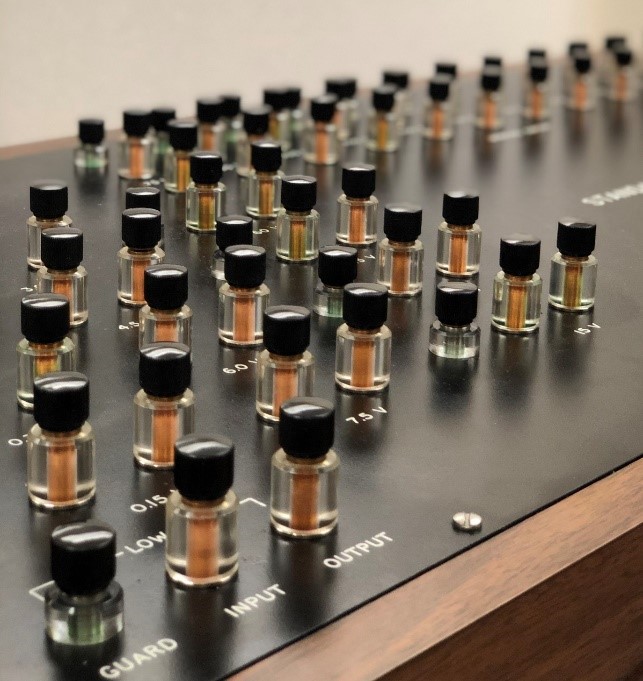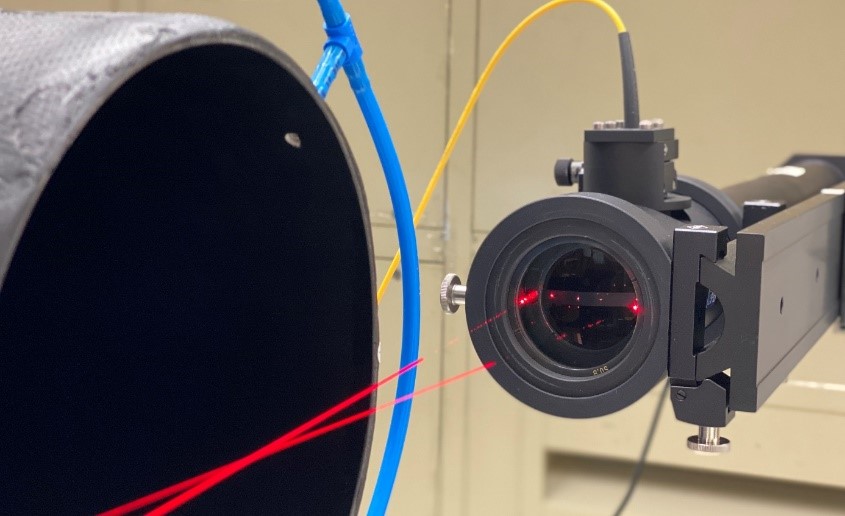General Public
Importance of Metrology
 Title : Source of Lux
Title : Source of LuxPhotograph by : Danny Chan, Photometry and Radiometry Laboratory (Note 1)
Lord Kelvin, the eminent mathematical physicist and the founder of thermodynamics, once said, “when you can measure what you are speaking about, and express it in numbers, you know something about it; but when you cannot measure it, when you cannot express it in numbers, your knowledge is of a meagre and unsatisfactory kind”.
The scientist Dmitri Mendeleev said that “Exact science is impossible without measures”.
Our country’s military and political leader Marshal Nie Rongzhen (聶榮臻元帥) also expressed that “Metrology is the prerequisite for technological advancements”.
Some History about Metrology
Metrology refers to the activities for the realisation of measurement units and achievement of accurate and reliable quantity values. Historically, it is called “weights and measures”, encompassing the values for length and weight (mass).
From time immemorial, it seemed obvious that a set of weights and measures with common standards is required for the human society. However, these standards vary with times and places and they did not seem to be adopted using objective principles. Take “length” as an example, an inch in ancient China referred to the distance between a stretched thumb and a middle finger of a man, or another saying was that it equalled to the length of 100 quinoas lining up end to end; ancient Egypt used the distance between the elbow of a man to his longest fingertip as a cubit; in the 12th century, the English king Henry I ruled that a yard was the distance from his nose to his thumb, whereas in the 14th century, King Edward II ruled that 1 inch equalled 3 grains of barley placed end to end lengthwise.
As the human society developed, productivity and scientific technologies improved markedly. Modern metrology is far more than just “weights and measures”. Modern metrological fields such as length, mass, force, thermometry, electromagnetics, radio frequency, time and frequency, ionizing radiation, acoustics, optics and chemistry have become independent science disciplines.
 Title : Stairway of DC voltages
Title : Stairway of DC voltagesPhotograph by : Jeffrey So, Direct Current Laboratory (Note 1)
Time Metrology and Satellite Navigation System
The history of metrology shows that the improvement in measurement accuracy is closely related to the progress in natural science and productivity. When people replaces the prevailing production technologies with new ones, they will demand higher accuracy in the measurement methods. This prompts scientists or engineers to explore and improve the measurement methods. Metrology is truly the prerequisite for technological advancements. Every breakthrough in metrology becomes catalyst for scientific discoveries and seed for technology innovation, which contributed to many epoch-making progresses. For example, satellite navigation cannot be realized without the remarkable improvement in the precision of time measurement. In setting up a satellite navigation system, each satellite is equipped with an ultra-precision atomic clock. Receivers on the earth surface only needs to detect and analyse signals transmitted by 4 or more satellites to determine the location of the receiver. To reduce positioning errors beneath 1 metre, the satellite clocks need to be synchronized to within a few nanoseconds. Without the capability to measure time accurately, a high precision positioning system cannot be achieved.
 Title : Laser Doppler Anemometer
Title : Laser Doppler AnemometerPhotograph by : Zoie Tse, Length Laboratory (Note 1)
Metrology and Detection of Gravitational Wave
Take “metre” as another example. Ever since it was defined in terms of the speed of light, its measurement accuracy has increased significantly by over ten thousand fold, enabling full-range and high precision measurements spanning from the atomic scale of the microscopic world to the cosmic scale of the macroscopic world. The subsequent invention of laser-based length measurement techniques, such as laser interferometry, has contributed to the rapid development of nanotechnology, precision manufacturing and even astronomy. The Laser Interferometer Gravitational-wave Observatory (LIGO) is a good example. The concept of gravitational waves was first proposed by Albert Einstein in 1916. Gravitational waves are disturbances in space-time produced by cosmic events such as collision of black holes. However, they are too feeble to be detected. After nearly a century of dedication and hard work, metrology advanced to a point where instruments sensitive enough to detect gravitational wave became practical. LIGO is equipped with numerous state-of-the-art technologies stemming from breakthroughs in different metrological areas. In order to reduce the phase noise generated by the interferometer from the scattering of laser waves and residual gas molecules, a vacuum environment at 10-7 Pa level (i.e. one-trillionth of the standard atmosphere) was created within the four-kilometre long arms of LIGO which is one of the largest and purest vacuum systems in the world. This system, coupled with LIGO’s high-end seismic isolation system, ultra-stable lasers, and optical components of extremely high standard, enables the measurement of a displacement that is one thousand times smaller than a proton. Therefore, when any gravitational waves pass through the interferometer, LIGO is capable of measuring the ultra-small and ultra-tiny variations in the length of the interference arms caused by the warping of space. The LIGO bears strong testimony to the motto of “Metrology is the prerequisite for technological advancements”.
We are now at the beginning of the quantum metrology revolution. The use of constants of nature to define the units of measurement aims to meet the need of scientific development in the next generation. This promotes technological advancement and create a better, more pleasant living environment in the future. In addition to be an important component of the local quality infrastructure, the Standards and Calibration Laboratory, as the top metrology institute for physical measurements of Hong Kong, China, endeavors to provide a solid foundation for the development of science and technology in Hong Kong, China.
Note 1 : To promote the importance of metrology, an internal photography contest was arranged in the Standards and Calibration Laboratory. This is one of the winning photographs.